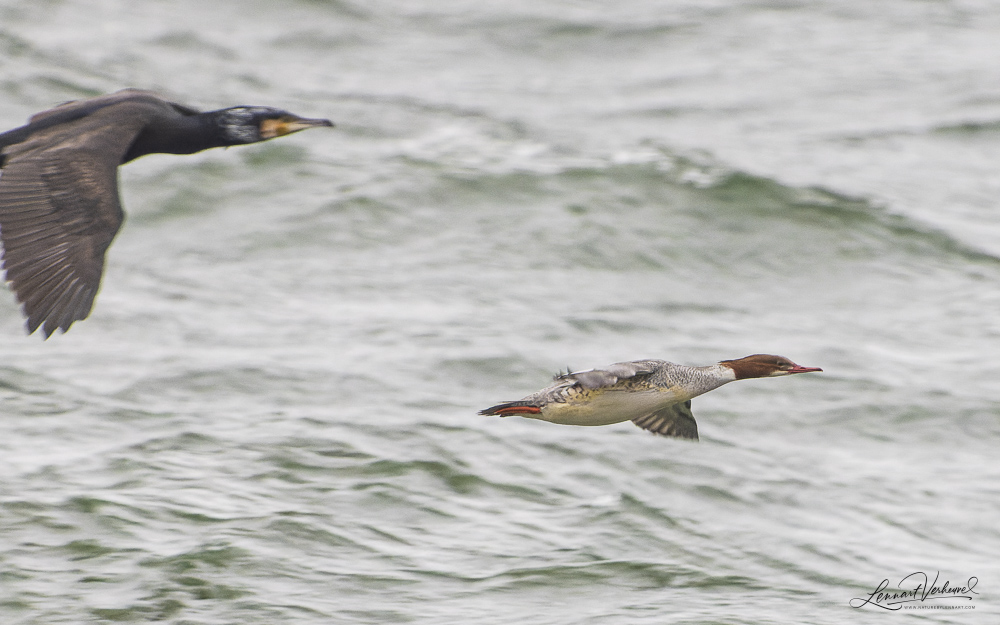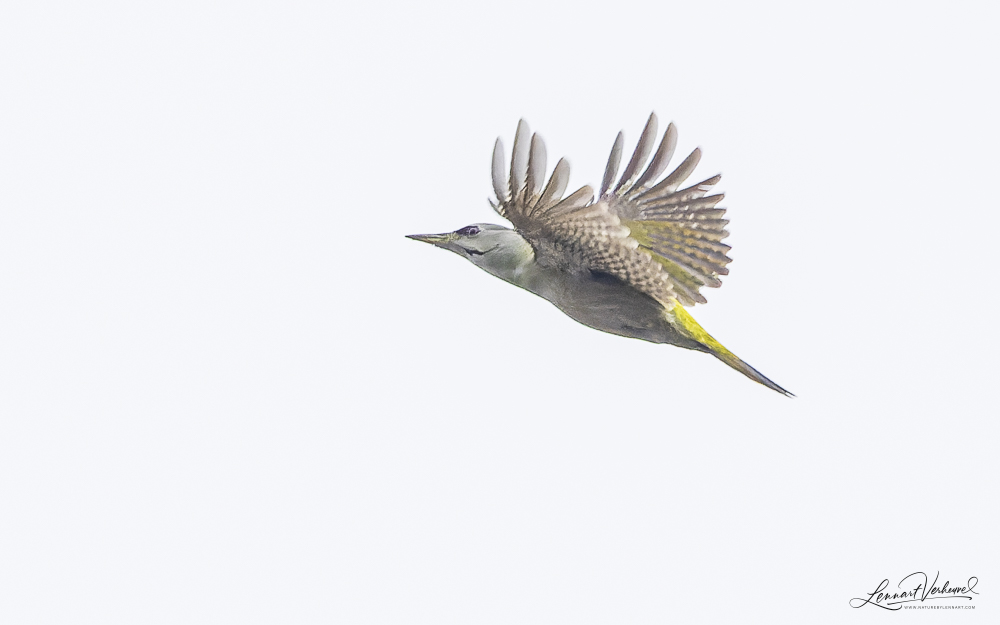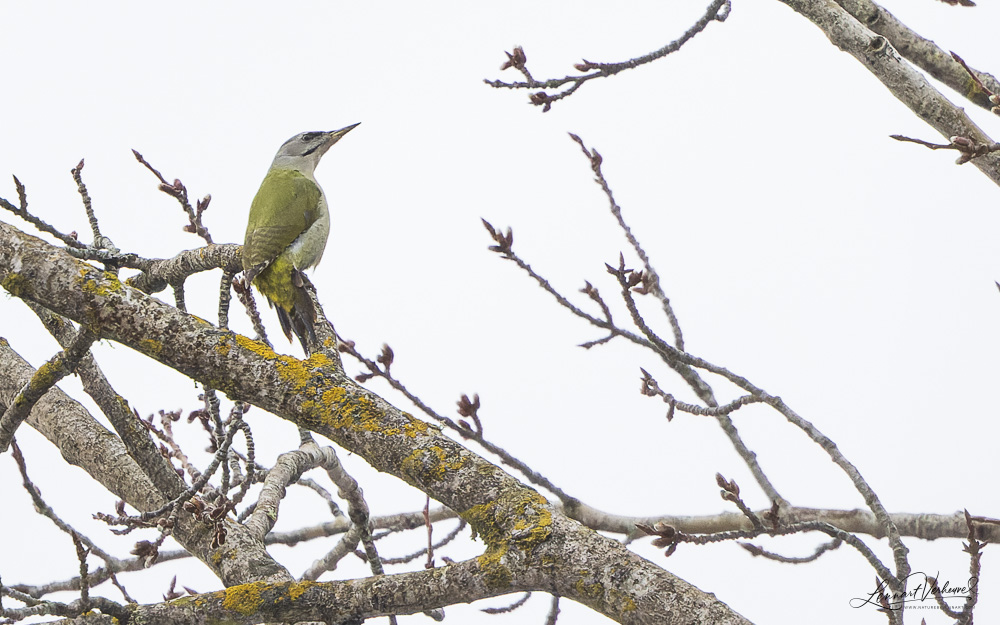- info@naturebylennart.com


In February 2024, Arie-Willem van der Wal, Jacob Molenaar, and I went to Estonia for a week to search for Eurasian lynx. We planned to spend four days and four nights searching for the lynx, and on the fifth day, we would look for a special duck: the Steller’s eider. Now that the first four days had gone really well, it was time for the icing on the cake!
Saaremaa Island turned out to be on the other side of Estonia, and according to Google Maps, it was over a five-hour drive (including a ferry) until we would reach the harbor where the Steller’s eiders were often seen. Wanting to leave nothing to chance, we set out very early so that we would be at the harbor with the first light. Getting out of bed was difficult after only 3 hours of sleep, but it had to be done! The folks at Sagadi Manor had kindly packed breakfast for us, so that was also taken care of.
The road to the ferry went smoothly, and we arrived well ahead of time. In the night, we couldn’t see much of our surroundings, but we could see that the boat had to navigate through a layer of ice. Because the sea here contains much less salt, it freezes more quickly. It can even go so far that people can ice skate from Saaremaa to the mainland! After the ferry ride, it was another hour and a half drive to the harbor.
There we arrived neatly in the first light. It was deserted, but there were plenty of birds! We saw some Velvet scoters and also many Tufted ducks and Common mergansers.

Common merganser

Tufted ducks
However, the spotlight was stolen by the Long-tailed ducks. There were at least 250 birds around the harbor, and they frequently flew past the car, while calling. These birds are usually seen from a great distance in the Netherlands, so it was amazing to see them up close! Due to the lack of light, it wasn’t easy to take good photos, but I couldn’t resist.







Long-tailed ducks
As cool as the Long-tailed ducks were, our goal was, of course, the Steller’s eider! They were not present at the harbor today. Fortunately, there were more places along the coast where we would be able to scan the sea. A road through a forest led to a beautiful vantage point with chalk cliffs reminiscent of those found in England. Using the telescope, we meticulously scanned the groups of ducks, and lo and behold, we found our first Steller’s eiders! They weren’t swimming very close, but they were clearly visible through the telescope.



Steller’s eider
They clearly preferred the sheltered areas because the sea was much calmer here than at the harbor. We walked further along the coast and carefully scanned that area for more groups of eiders. We didn’t find any, but as we were walking back, a group of forty Steller’s eiders suddenly flew past! They were still at a distance, but we had convincingly ticked off that species.

Steller’s eider
So, we could have taken it easy for the rest of the day. However, we still had some plans. We would also like to see a Northern hawk owl. It had been seen on the island several times this winter. But first, we drove back to the harbor because Jacob and I wanted to capture more flight shots of those Long-tailed ducks! It was again a beautiful show, and we had no regrets. It was remarkable how the birds often landed on the water, then flew close by, and then turned back, repeating the whole sequence. I maintained this sequence in the series below.


























Long-tailed ducks
There was even time to get some slomo video!
When the Long-tailed ducks were sufficiently photographed, we explored the island in the hope of finding more interesting birds.
I had another location saved for Steller’s eider, so we went there first. Here, we found a large group of Greater scaup, among which were some Steller’s eiders.

Greater scaup

Greater scaup and Steller’s eider
We didn’t find the Northern hawk owl, but at another spot, we saw a beautiful Great grey shrike.


Great grey shrike
The White-tailed eagle also gave us an excellent show.

White-tailed eagle
In the twilight, we encountered a group of Whooper swans.

Whooper swan
We ended the day with an excellent dinner in a windmill, where we spotted the last species of the day on the sails.


Jackdaws
The excitement wasn’t quite over yet because after our excellent meal, we hurried back to the ferry to return to the mainland where our accommodation was. We were a bit too hasty because we accidentally overtook an unmarked police car… It took half an hour to fill out all the paperwork. Fortunately, there was another ferry that evening! We arrived at our accommodation quite late in the evening: we were definitely ready for bed then!
The next morning, we made one last attempt to find the Grey-headed woodpecker, and we succeeded! The Grey-headed woodpeckers here were clearly more active than at Laahemaa, and upon hearing their call, one flew over immediately. Soon, there were two, and eventually, we even saw three together! Two of them perched in a tree with a Middle spotted woodpecker. It was a beautiful sight.






Grey-headed woodpecker
A little further, we also found a beautiful Middle spotted woodpecker on the ground.

Middle spotted woodpecker
Some Roe deer were the last mammals we would see in Estonia.

Roe deer
In the afternoon, we boarded the plane again, feeling very satisfied with our trip!
Want to read more about our search for the Eurasian lynx? Click here!